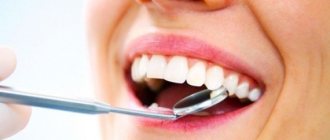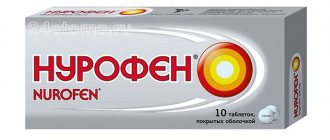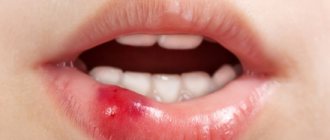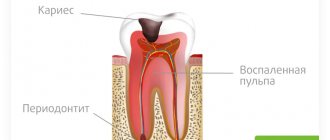An implant is a multicomponent system consisting of an intraosseous element and an abutment, an adapter between an artificial root and a prosthesis. The implant/abutment connection is precisely calibrated, without micro-gaps, with well-designed abutment positioning. These are important factors on which the correct distribution of the chewing load on the implant and the durability of the orthopedic system depend.
When a crown on an implant is loose, there is always a reason for it. If the implant itself remains motionless, most likely the fixing screw has been loosened or the crown has become uncemented (if it is cemented).
What to do? Go to an appointment with an orthopedist, who will determine the cause of the looseness and effectively solve the problem - replace the fixing component or reinstall the crown. The main thing is to accurately install a loose implant or crown. Indeed, in the first situation, reimplantation may be required, and the second option involves a simple adjustment of the coronal part; the implant itself does not need to be changed.
Reasons for crown mobility
In most cases, the mobility of the prosthesis has nothing to do with the qualifications of the implantologist. Among the main reasons are:
- Loosening of the screw connection between the abutment and the prosthesis
. This is possible if products from different brands were used. For example, the implant is Nobel Biocare, and the superstructure is Osstem. It is important to use original products of the same brand, which are developed as a whole, otherwise the likelihood of failure of all components is too high. - Loss of properties of the cement composition
. As a rule, this occurs due to high chewing load on the tooth, adherence to too hot or cold foods. The prosthetic system is fixed to the abutment with a soft cement composition; under unfavorable conditions, it begins to collapse, is gradually washed out, and the crown becomes loose.
The crown can be reattached in the clinic where the implantation was performed. The orthopedist will tighten the screw with an implantation key and secure the prosthesis. With the cement method of fastening, the crown will be cleaned of the remnants of the old composition and “set” on the cement again. Things are different if not only the crown, but the implant along with it is loose. It is very difficult to independently determine whether the implant crown is loose or the fixation of the intraosseous element is weakened. This requires a medical assessment of the clinical picture and a diagnostic examination.
General overview
Dental implants, integrated into the structure of bone tissue or the oral mucosa, can serve as the basis for various types of prosthetic systems:
- Permanent bridge-type structures;
- Single fixed or conditionally removable systems;
- Removable structures of full or partial replacement.
The implant itself is a product made of a biologically compatible material - usually titanium, in its pure form, or with the addition of alloys - consisting of two parts:
- The intraosseous part, or body of the implant, shaped like a cone, cylinder, or something in between. In rare cases, the rod can also be made in the form of a plate. The main functional task is to replace the root section of a lost tooth, taking over and then distributing the chewing load. The body of the implant is implanted into the structure of the bone tissue, and in case of its insufficiency and restrictions on plastic surgery, into the zygomatic or basal bone.
- An abutment is a fixing element that acts as a connecting link between the pin and the artificial crown that replaces the outer part of the tooth. The abutment transfers the load to which the prosthesis is exposed to the intraosseous body, and also provides protection against damage to the internal tissues of the jaw by pathogenic infections. In some cases, a monolithic design is allowed, when the implant and abutment are a single whole.
Attaching an artificial crown or prosthesis to an abutment involves the use of dental cement, as well as screw or ball-shaped retainers.
Implant mobility due to patient negligence
The main reason why the intraosseous structural element began to wobble is ignoring the recommendations regarding the care of implants and the orthopedic system fixed to them. If the surgeon performed the implantation without violating the protocol, 90% of the responsibility for rehabilitation lies with the patient. The following can lead to loosening of the structure:
- Refusal of medications prescribed by the surgeon for the speedy restoration of injured tissue, prevention of the inflammatory process, etc.
- Regular consumption of alcohol and smoking slow down the rate of engraftment of the artificial root, increases the risk of peri-implantitis, and impairs blood circulation in the tissues. Clinical studies have shown that implant failure in patients with bad habits is 3 times higher than in those who do not have them.
- Overload of the artificial root when chewing hard foods. Premature chewing load on the implant. Typically, the doctor recommends following a soft diet for 2-3 weeks after the intervention. Ignoring the recommendation leads to displacement of the implant in its bed, disruption of osseointegration and, as a consequence, rejection of the intraosseous element.
The survival rate of a titanium structure is also affected by systemic diseases accompanied by impaired regenerative processes. These include diabetes mellitus, immunodeficiency states, oncological processes, some pathologies of the central nervous system, and chronic processes in the oral cavity.
Preventive measures
To reduce the risk of the crown loosening and falling out, it is important to strictly follow the specialist’s instructions after the procedure, as well as maintain cleanliness and hygiene of the oral cavity. Here's what prosthetics experts recommend in this regard:
- brush your teeth twice a day, rinse your mouth after every meal, use floss. It is advisable to purchase an irrigator - a device that supplies a powerful air-water jet for better cleaning of hard-to-reach places. You can read more about the principle of operation of the irrigator and popular models of the device in our special article,
- follow some nutritional principles. For example, immediately after the procedure you will have to give up products that are too hard and stretchy. Subsequently, it is better to forget about the habit of gnawing seeds with your teeth and cracking the shell,
- It is better to quit smoking and drinking alcohol too often,
- treat the installed structure carefully and carefully, regularly check it for chips, cracks and other damage,
- When the first alarming symptoms appear, you should immediately consult a doctor.
To maintain your smile, proper dental hygiene is important.
After dentures, do not forget to visit the dentist every six months for preventive examinations and a professional. hygiene. At each such appointment, the doctor will evaluate not only the condition of the teeth and gums, but also the integrity and functionality of the installed dentures. If necessary, when the product’s expiration date approaches, a specialist will prescribe its timely replacement.
1Massironi, D. Precision and aesthetics. Clinical and dental stages of dental prosthetics, 2008.
What treatment methods are used
Treatment for mobility of the structure depends on the cause of the problem. If the implant crown is loose and the intraosseous element itself is motionless, it is again secured with a screw or cement. When the entire structure is wobbly, including the artificial root, treatment tactics are selected according to the clinical picture. The most favorable option is that the implant wobbles slightly, there is no inflammation around it, and the gums do not hurt.
In the second scenario, loosening of the artificial root occurs against the background of inflammation and pain in the jaw. Treatment includes:
- Cleaning the implant and nearby tissues - opening abscesses (if any), ultrasonic cleaning of plaque in the subgingival area.
- Osteoplasty using osteoplastic material and barrier membranes (according to indications).
- Antibacterial, antihistamine, anti-inflammatory agents.
- Treatment of the oral cavity with antiseptic compounds.
- X-ray control at each stage of treatment.
After the inflammation is eliminated, the prosthesis is again fixed to the implant. If the intraosseous element is rejected, it is removed from the socket, necrotic tissue is removed, and bone grafting is performed. Re-implantation is possible only after 6-8 months, when the bone mass has taken root and the tissue has recovered to its parameters.
COMMENTS
QUESTION Hello, my metal-ceramic crown fell out, and underneath it was a white tooth, without caries. And chewing doesn’t hurt them at all. I made an appointment with the doctor, but I’m afraid that he will tell me to get a new crown, but I would like to still wear the old one, it’s completely free of cracks, and nothing has broken off. Christina
ANSWER Hello, Christina. In order not to be afraid and not to speculate, it is better to go for a consultation with an orthopedist, undergo an examination and listen to the specialist’s verdict. It is possible that the fallen crown can indeed be returned to its place, but it is possible that the tooth will have to be drilled or the stump tab removed if it is movable. Try not to load the area of the dentition where the defect has now formed - the food should be soft and not hot. And carefully rinse the fallen crown and place it in a clean box, after wrapping it with a piece of bandage.
1Dawson P.E. Functional occlusion: from the temporomandibular joint to smile planning, 2016.
Author: Chorny S.V. (Thank you for your help in writing the article and the information provided)
Rejection symptoms
Rejection of the intraosseous element is a serious complication leading to the loss of the metal pin. Usually, implant rejection is accompanied by quite eloquent symptoms:
- Swelling of the gums, which does not decrease within 5 days after the intervention, but, on the contrary, increases.
- Reddened mucous membrane around the artificial root.
- Severe pain that intensifies with any load on the structure.
- Bleeding of the gums around the implant for more than 4-5 days after implantation.
- Purulent discharge from a wound.
- The appearance of a putrid odor from the implantation area.
- Excessive mobility of the artificial root, exposure of its neck, subsidence of the gums.
- Deterioration in general health, increase in temperature.
A loose implant crown is a reason to urgently go to the dentist. Rejection is rarely treated. With such symptoms, the best option is to remove the implant from the bone with further drug therapy aimed at restoring the body and regenerating bone tissue.
Method No. 5: using the Coronaflex device
The device looks like a pistol, and its operating principle is based on compressed air, which escapes from the device under pressure and breaks the cement. At the same time, this device does not have any negative effect on the artificial material of the structure or on the soft tissues of the patient.
The Coronaflex device is not available in every dentist today, so the procedure with it will be more expensive compared to other methods. However, it makes sense to use the device if you have a zirconium dioxide crown, which can be reinstalled after, for example, the tooth under the structure is cured. In addition, the procedure using this device is more comfortable, safer, and requires less time to solve the problem. Also, according to patient reviews, the device makes virtually no noise, which allows you to feel comfortable in the dentist’s chair.
The Coronaflex device removes the crown quite comfortably
The implant fell out, what should I do?
In rare cases, the implant becomes unscrewed from the bone and may fall out. This occurs when the size of the socket and the intraosseous element do not match, as well as due to the weakness of the jaw bone. Such situations, when the implant loses its fixation and falls out, but there is no inflammation or other signs of rejection, can occur against the background of systemic diseases in which tissue regeneration is impaired (osteoporosis, diabetes mellitus). The problem is solved by reinstalling the structure using regenerative membranes (enriched with growth factors) that accelerate osseointegration, and prescribing a course of vitamin therapy.
Negative factors
The weakened position of the prosthetic structure placed on implants may be caused by one of the following factors:
- Displacement of the crown relative to the abutment;
- Displacement of the abutment in relation to the implant;
- Displacement of the implant in the bone structure.
Identifying the specific area where the problem arose is the first step towards solving it. In the case of the first and second factors mentioned, the main cause, as a rule, is a failure of fixation caused by the destruction of the cement base, rotation of the screw elements or loosening of the thread.
A much more serious problem is the third factor, which indicates rejection of the rod by the bone structure. Considering the complexity and duration of recovery of the body during implantation, an unsuccessful outcome of the operation causes a lot of inconvenience - both for the patient and the dentist. A similar situation may arise under the following circumstances:
- Failure to comply with the implant installation protocol;
- Failure to follow medical recommendations during the engraftment period;
- The presence of hidden systemic pathologies that have become a catalyst for rejection.
Regardless of the cause, at the first symptoms of an anomaly, it is recommended to immediately undergo additional examination using an X-ray machine or CT scan.
Prevention
The best treatment is prevention. The positive outcome of the operation is influenced by:
- Professional approach
– you need to take the choice of a clinic and an implantologist seriously, since the success of treatment depends 90% on the professionalism of the doctor. - Quality of diagnosis and preparation
- you need to prepare seriously for the operation, eliminating all contraindications. To do this, you need to undergo tests and not hide health problems from the surgeon - the more the doctor knows about the patient’s health condition, the more accurately he will select the implantation protocol, and the better the implantation of the artificial root will be. - Oral hygiene
– at the preparation stage, all dental problems should be eliminated and the quality of hygiene procedures performed should be improved.
After implantation, be sure to follow medical recommendations regarding care, nutrition, and physical activity. Do not skip control and preventative examinations.
Method No. 4: Kop (Koch) apparatus
This is a tool that again has a hook at the end. However, the device is not launched mechanically, but using a button, which breaks the cement along the edge of the crown using small shocks or a shock wave, after which the structure begins to move from its place. Next, the doctor can only use special forceps that hook and help to finally remove the prosthesis.
See what the Koch apparatus for removing crowns looks like in the photo.
This is what the Koch apparatus for removing crowns looks like
This device is more convenient and efficient than a manual device; it allows you to remove the product with virtually no damage and “works” quickly. However, it also has disadvantages. In particular, many patients note that during the procedures they feel “twitching” and discomfort. Also, some people are very concerned about the noise that the device makes. There is one more drawback - the device can damage the ceramic coating of the crown, leaving chips and cracks, and then the structure will have to be restored.
Stock
-27%
Teeth in 1 day on Straumann implants using ProArch technology!
300,000 rub. 220,000 rub.
get -47 %
Dental implantation RUB 18,500.
until 01/15/2022 35,000 rub. 18500 rub.
get -9 %
BASAL COMPLEX - Restoration of teeth on 1 jaw in 3 days 330,000 rub.
300,000 rub.
get -40 %
Treatment of caries with a discount of 3000 rubles.
5000 rub. 3000 rub. get










